Gravestone obelisks have been one of the most popular types of cemetery memorial stones since the mid-1800s. In fact, it is difficult to find a cemetery from that time period without one.
Obelisks, defined as upright four-sided pillars that gradually taper off at the top into a pyramid shape, originated in Egypt. Many were capped with real gold to reflect the sun.
Ancient Egyptian obelisks, shaped like rays of sunshine, were a symbol of the sun god Re who had the power of creation. Thus, obelisks in modern cemeteries represent God or the great creator.
In 300 BC, Euclid, the Greek mathematician who is considered to be the father of geometry, explained the usefulness of an obelisk. He taught that the moment the sun reaches its zenith at high noon, the obelisk points directly north. And the midway point between the long shadow and the short shadow marks the equinox.

Napoleon and Gravestone Obelisks
It is easy to find obelisks at the cemetery but how did this very Egyptian symbol make its way into cemeteries around the world?
Gravestone obelisks became popular for many reasons. They are associated with ancient greatness. They can be used in relatively small spaces. And they are less expensive than other types of large monuments, while still being very majestic. But there is more to it than that.

It is a story that started in France.
Between 1798 and 1801 Napoleon Bonaparte conducted a three-year military campaign to conquer Egypt for France. His reasons for wanting to dominate the region were three-fold:
- protect French trade interests
- destroy British commerce in Egypt by blocking their trade routes
- bring Egyptian culture and intellectual advancement to France
With this third objective in mind, Napolean ordered 167 scholars and scientists to accompany the French military forces into Egypt. The group included engineers, artists, geologists, mathematicians, chemists, physicists, naturalists, and botanists. Their task was to find all that was good and beautiful in Egypt and make it French.

Napolean’s forces were eventually driven out of Egypt, defeated militarily as well as by disease, but France and the rest of the world were forever changed by their exposure to mid-East culture. The French literally and figuratively dragged obelisks home with them.

Trouble at Home
After returning to France, Napoleon faced trouble of a different sort. Many large cities were plagued with epidemics as a result of people attending worship services in churches, temples, and synagogues where dead bodies were buried within the walls and beneath the floors.
As more and more people died during the epidemics, corpses were also hastily buried outdoors in shallow graves without coffins. Bodies were stacked on top of one another in an effort to save space in churchyards that had been in use since the Middle Ages. Then survivors walked daily through these fields serving as overstuffed burial grounds, further exposing them to disease.
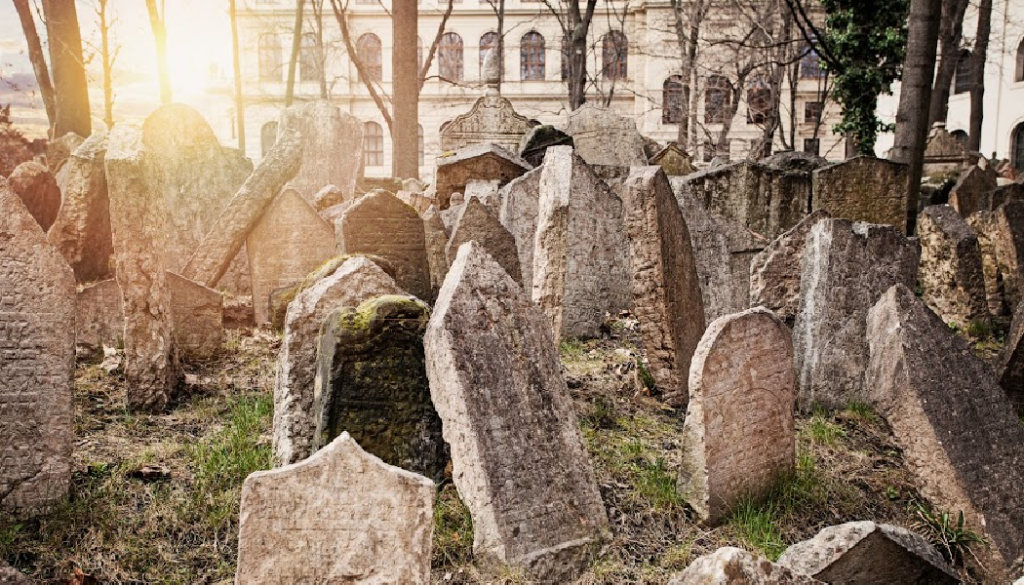
So in June of 1804, Napoleon banned all burials in places of worship and their surrounding yards throughout France. This proclamation went a long way to improving the health of city-dwellers but also altered 1500 years of ecclesiastical tradition.
Napolean’s ban created an urgent need for burial space beyond the city limits. So in December of 1804, a park-like cemetery was established just outside of Paris called Cimetiere du Pere Lachaise.
Egyptian Obelisks in a Paris Cemetery
Pere Lachaise was a unique cemetery for its time because, unlike the crowded churchyard burial grounds, this cemetery was designed to have trees, benches, and walking paths. Its park-like atmosphere was a purposeful effort to encourage city-dwellers to bury their loved ones outside of city limits.
As Parisians left behind the burial sites in churches, churchyards, temples, and synagogues, they also frequently abandoned the religious symbols that had accompanied them.
Instead, the French people looked to the scholars and scientists who had returned from Napolean’s campaign for design ideas to adorn their loved one’s tombs. These men influenced members of Parisian society to consider anything Egyptian to be in vogue – from art and architecture to Egyptian symbols on gravestones and mausoleums.
Thus, gravestone obelisks quickly became the go-to cemetery monument.

Obelisk Popularity Spreads
Today, Pere Lachaise is the most visited cemetery in the world, with more than 3.5 million visitors per year.
As Pere Lachaise rapidly became a popular tourist destination spot, it also became an inspiration for park-like cemeteries around the globe. When world leaders traveled to Paris, they took the Egyptian trend home with them, impacting architectural and artistic styles in cemeteries across the world.
For decades, Egyptian obelisks remained popular. Then there was a brief lull in popularity.
But in 1922, King Tutankhamun’s tomb was discovered in Egypt. This set off a renewed interest in all-things Egypt and the time period came to be known as the “Egyptian Revival.” Once again, stone-cutters across the world were asked to pull out their tools to erect obelisks and chisel Egyptian symbols.
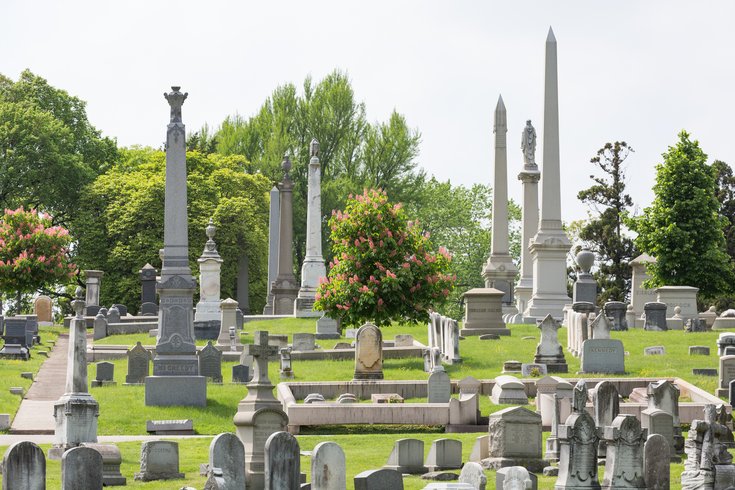
Woodlands Cemetery in Philadelphia, Pennsylvania is a classic example of a cemetery where gravestone obelisks were heavily used in the mid-19th century. In fact, the first of the five amazing gravestone obelisks listed below was in Woodlands Cemetery.
Amazing Gravestone Obelisks – #1
The World’s Tallest Cemetery Obelisk

You might think the tallest gravestone obelisk in a cemetery would belong to a government or military leader. Or perhaps a Hollywood movie star. But the honor actually goes to a dentist.
The dentist is Dr. Thomas W. Evans, who passed away in 1897, and his towering obelisk is located at Woodlands Cemetery in Philadelphia, Pennsylvania.
Evans’ gravestone obelisk stands 150 feet high, dwarfing the gravestones around it. That is as tall as a 15-story building! The obelisk is situated on a raised platform with views of the Schuylkill River and the University of Pennsylvania. It is a monumental tribute to a monumental life.
Wait. What? You’ve never heard of Dr. Thomas W. Evans? Well, neither had I. But it seems he had a long list of impressive accomplishments during his lifetime.
His obituary in The New York Times stated that he was “a secret envoy between crowned heads” and that “no American has ever had a more remarkable career in Europe”.
Well, how did that happen? Evans was born in Philadelphia and even as a child he was interested in fixing teeth. His first “patients” were stray dogs in the 37th Street neighborhood. Eventually, he attended dental school and set up a practice in Lancaster, Pennsylvania where he specialized in gold fillings.
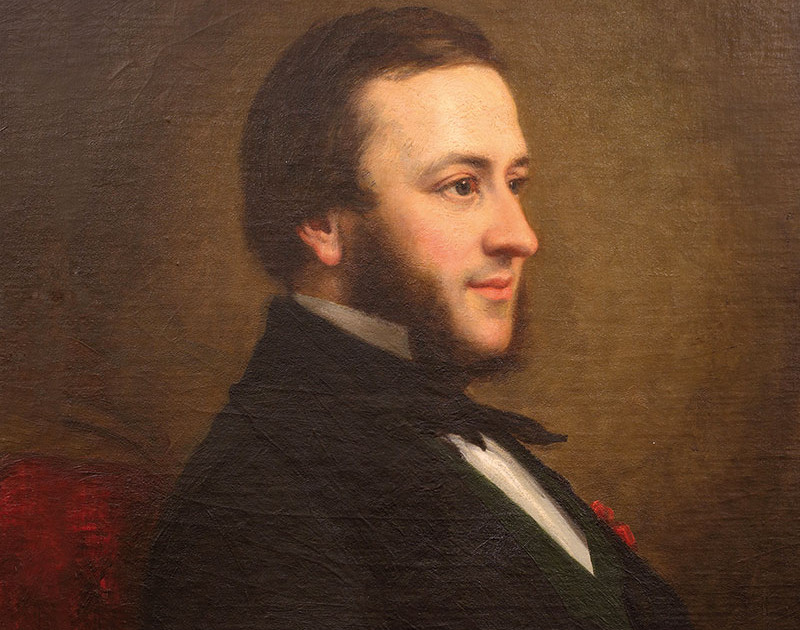
From Philadelphia to Paris
This American dentist became so skilled at his craft that when Louis-Napoléon Bonaparte developed a severe toothache and his own dentist could not be found, Evans was summoned to Paris.
Bonaparte’s tooth was repaired successfully and, as a result, Evans was invited to set up his dentist’s chair as a permanent fixture in France’s royal court.
As a goodwill gesture, Bonaparte shared his talented dentist with other government leaders from around the world. And as Evans became their trusted health advisor, his influence spread beyond dentistry to politics.
Evans’ charming personality also helped him to become a confidant to kings. (And I’m sure it didn’t hurt that the dentist’s laughing gas made for loose tongues!) As Evans’ dentist chair became a royal throne of sorts, it also became a place where secret messages were passed from monarch to monarch.
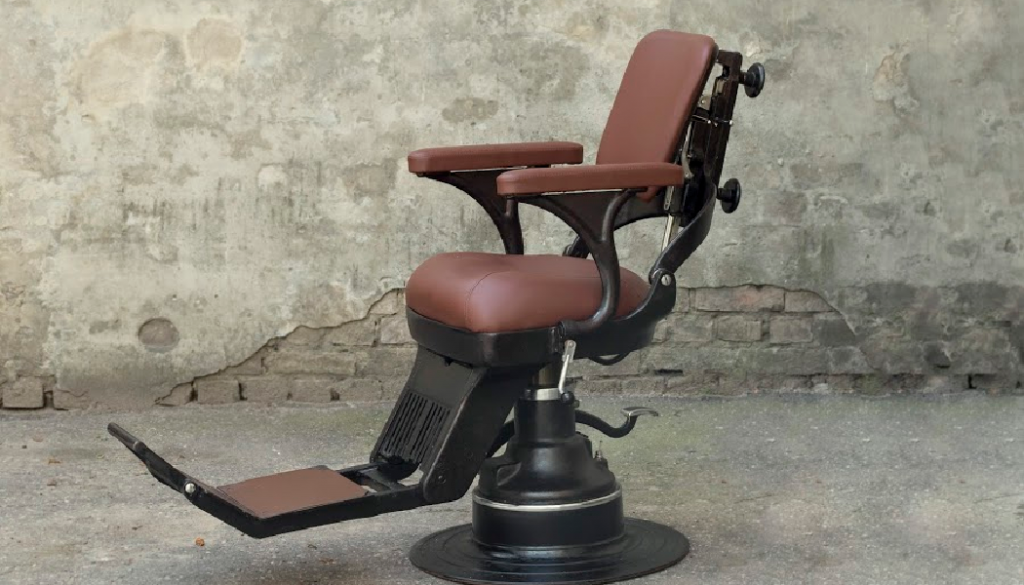
Evans’ Notable Accomplishments
- pioneered the use of laughing gas
- introduced amalgam fillings in dentistry
- one of the first to use nitrous oxide as an anesthetic
- saved the life of Emperor Fredrick III of Germany, who had terminal laryngeal cancer, by inserting a tube that allowed him to breathe
- influenced French neutrality in the American Civil War as he was sent by Napolean III on a diplomatic mission to President Lincoln in 1864
- received more than 200 honors including the Legion of Honor
During Franco-Prussian revolutionary uprising, Evans helped Napolean’s wife, Empress Eugenie, to escape a potential beheading.
As mobs stormed the Tuileries Palace, the empress began to watch her own servants steal royal possessions before her very eyes. Angry rioters pushed against the gates, shaking the gilded spikes off the top of the fence and tearing down statues.
With her husband already captured, Empress Eugenie fled to Evans for help. He whisked her out of the city in his own carriage redressed in his wife’s more common clothes.

Evans’ Fortune
Although Evans did not charge his patients who came to the royal court for his services, they showered him with gifts in token of their gratitude.
He was given such gifts as portraits and statuettes of French and Russian heads of state, gold pocket watches studded with diamonds, and a carriage with his monogram engraved on its doors.
At the time of Evans’ passing, he had accumulated a fortune of $35 million (valued at more than $1 billion today), a million-dollar jewelry collection (worth over $31 million in 2019), real estate, and several Manet paintings.
In his will, Evans donated money and land for the creation of a dental school and museum at the University of Pennsylvania.

Amazing Gravestone Obelisks – #2
Ludwig van Beethoven’s Final Note

The music of Ludwig van Beethoven, German pianist and composer, is some of the most performed music in the world.
Beethoven’s talent became evident at an early age when he was intensively – and often harshly – taught by his father. At age 21, he moved to Vienna where he studied composition with Joseph Haydn.
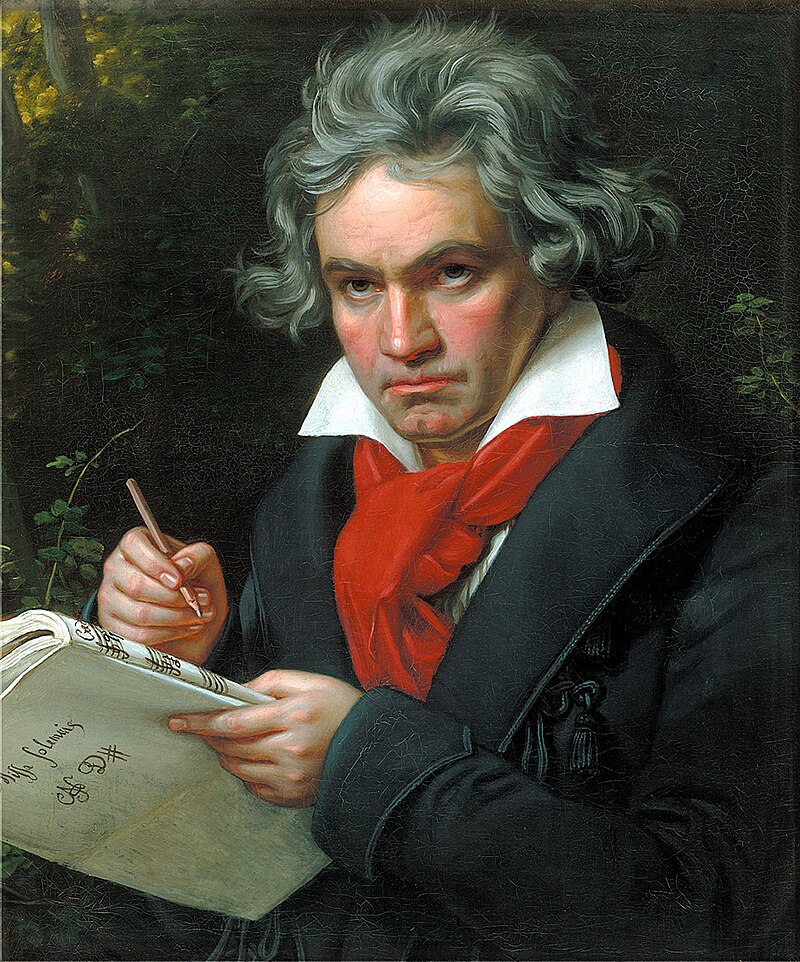
His first orchestra composition debuted in 1800, followed by string quartets in 1801, symphonies in 1804 and 1808, a violin concerto in 1806, and piano concerto in 1810. All the while, he was losing his hearing. By 1814, Beethoven was completely deaf, at which time he gave up performing and seldom appeared in public.
He composed several more works from seclusion before his health declined and he passed away in 1827.
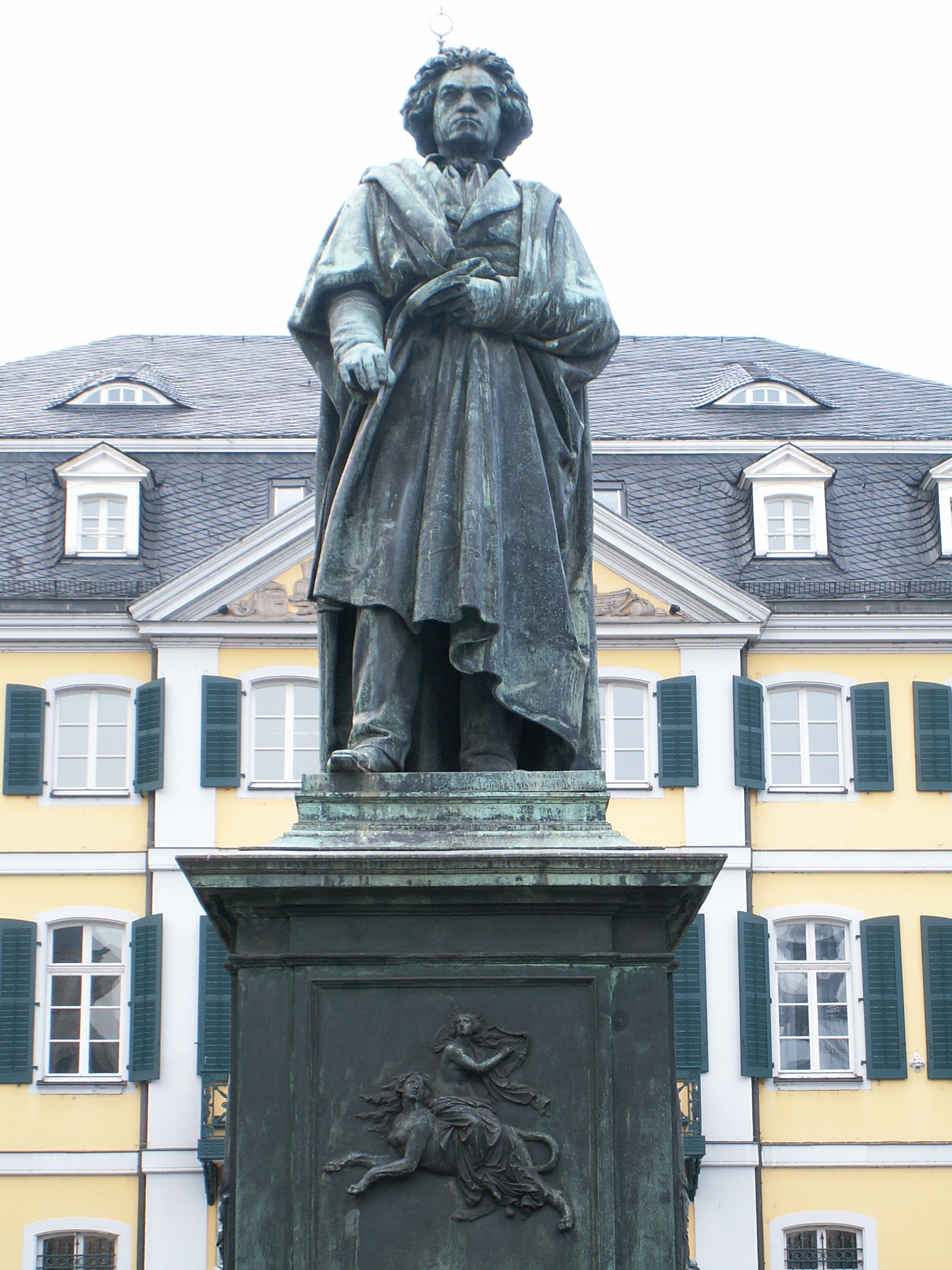
At Beethoven’s birthplace in Bonn, Germany, there is a monument, a museum, and there are frequent music festivals in his honor.
The third largest crater on Mercury and an asteroid are both named in Beethoven’s honor. But the tribute at his final resting place is, quite simply, an amazing gravestone obelisk.
Amazing Gravestone Obelisks – #3
Abraham Lincoln’s Tomb
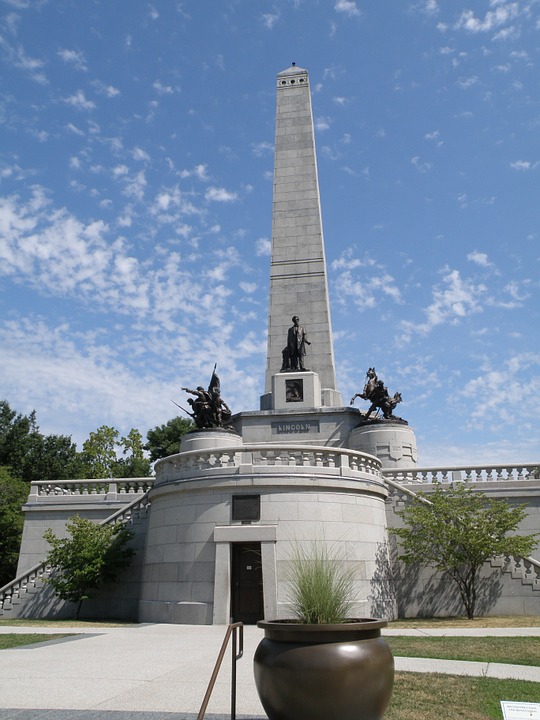
Abraham Lincoln, the 16th US President, led the country through some of its darkest hours of the American Civil War. His final resting place is marked by one of the most dramatic gravestone obelisks.
Lincoln, his wife Mary, and three of their sons are buried at the Lincoln Tomb State Historic Site.
The Lincoln Tomb, a National Historic Landmark, is constructed of brick and covered in granite. It has a 72 foot square base with large semi-circular rooms on two sides. Double sets of stairs lead to a terrace, topped with the 117-foot-tall obelisk.
At the corners of the gravestone obelisk are four bronze sculptures, representing the four Civil War military services—infantry, artillery, cavalry, and navy.

Grave Robbers
After Lincoln was shot by an assassin in 1865 and his body lay in a white marble sarcophagus above-ground at Oak Ridge Cemetery in Springfield, Illinois until 1876.
At that time, a gang of counterfeiters from Chicago decided it could be profitable to steal the president’s body. The thugs included a small-time crime boss, a saloonkeeper, and a manufacturer of counterfeit nickels.
Their plan was to exchange the president’s body for a $200,000 ransom and the release of their fellow gang member, an expert engraver of counterfeit plates, from his 10-year prison sentence.
It seemed an easy target. Oak Ridge is a rural cemetery about 2 miles outside of town. There was just a single padlock on the door of the tomb. There was no night watchman and no groundskeeper lived on site. The sarcophagus wasn’t even sealed with cement, just plaster of Paris.
Their scheme may have worked if the gang had some body-snatching experience but they didn’t, so they hired someone who did. However, the person they hired turned out to be a Secret Service double agent. He went with them on their would-be heist, which quickly turned into a comedy of errors. And he promptly reported the incident to his superior officer every step of the way.
So instead of getting their buddy out of prison, the gang members ended up in prison themselves. And Lincoln’s coffin was moved into a steel cage 10 feet below the floor of the Lincoln Tomb.

Lincoln Quotes
Abraham Lincoln was a scholar, a voracious reader, orator, lawyer, and was known for his wisdom. Here are some famous Lincoln quotes.
- “Folks are usually about as happy as they make their minds up to be.”
- “My best friend is a person who will give me a book I have not read.”
- “Nearly all men can stand adversity, but if you want to test a man’s character, give him power.”
- “Do I not destroy my enemies when I make them my friends?”
- “I can see how it might be possible for a man to look down upon the earth and be an atheist, but I cannot conceive how a man could look up into the heavens and say there is no God.”
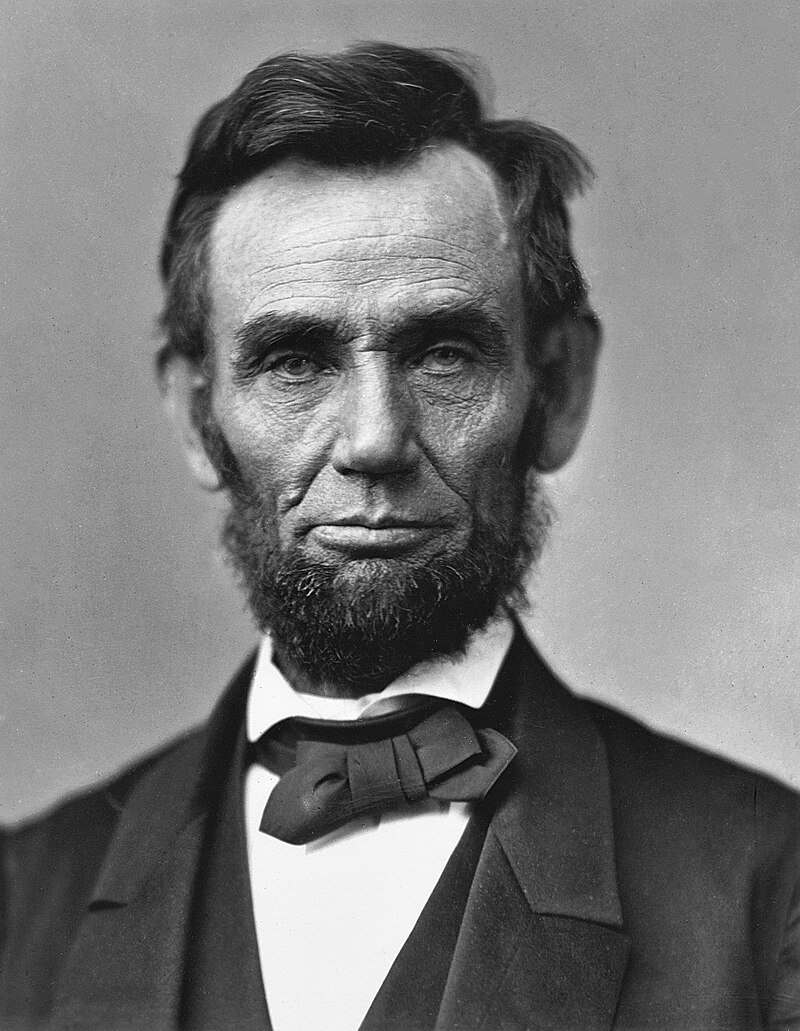
And he could even laugh at himself. Lincoln said, “If I were two-faced, would I be wearing this one?”
How to Photograph Gravestone Obelisks with the BillionGraves App
One of the advantages of recording family information on a gravestone obelisk is that there is lots of room for inscriptions. Names and dates can be engraved on all four sides. But that does make it a little tricky for BillionGraves photographers to capture all the data. Once you know how though, it’s easy! Here’s how . . .
- If you are new to BillionGraves, download the BillionGraves app to your smartphone.
- Then set up an account. This can be done on the app on your phone or by clicking HERE. It’s free.
- From the main screen of your BillionGraves app, click on the green button labeled “Take Pictures”.

- Step way back until you can see the entire obelisk. Tap on the white button to take a photo, leaving space all the way around the monument.
- See the chain icon in the corner of your screen? That is used to link photos together. Tap on it. That will automatically link your previous photo with the next one.
- Now step in closer and take a picture of the information on the front of the gravestone. Tap the chain icon again to link.
- Next, step around to the second side of the obelisk and take another photo. Tap the chain icon again to link.
- Step around to the third side of the obelisk and take a photo. Tap the chain icon again to link.
- Finally, take a photo of the fourth side of the obelisk and you’re done! The volunteer who transcribes the names and dates on this obelisk will be shown all of the photos you took at once.

You may also be interested in BillionGraves’ blog posts 3 Amazing Cemeteries or The 7 Largest Cemeteries in the World or Amazing Mausoleums from Around the World.
Let’s Get On It!
We hope you have some great adventures photographing amazing obelisks!
If you would like to volunteer to take gravestone photos with the BillionGraves app, click HERE to get started. This can be done on your or with your own group. You are welcome to do this at your own convenience, no permission from us is needed. If you still have questions after you have clicked on the link to get started, you can email us at Volunteer@BillionGraves.com.
Happy Cemetery Hopping!
Cathy Wallace


